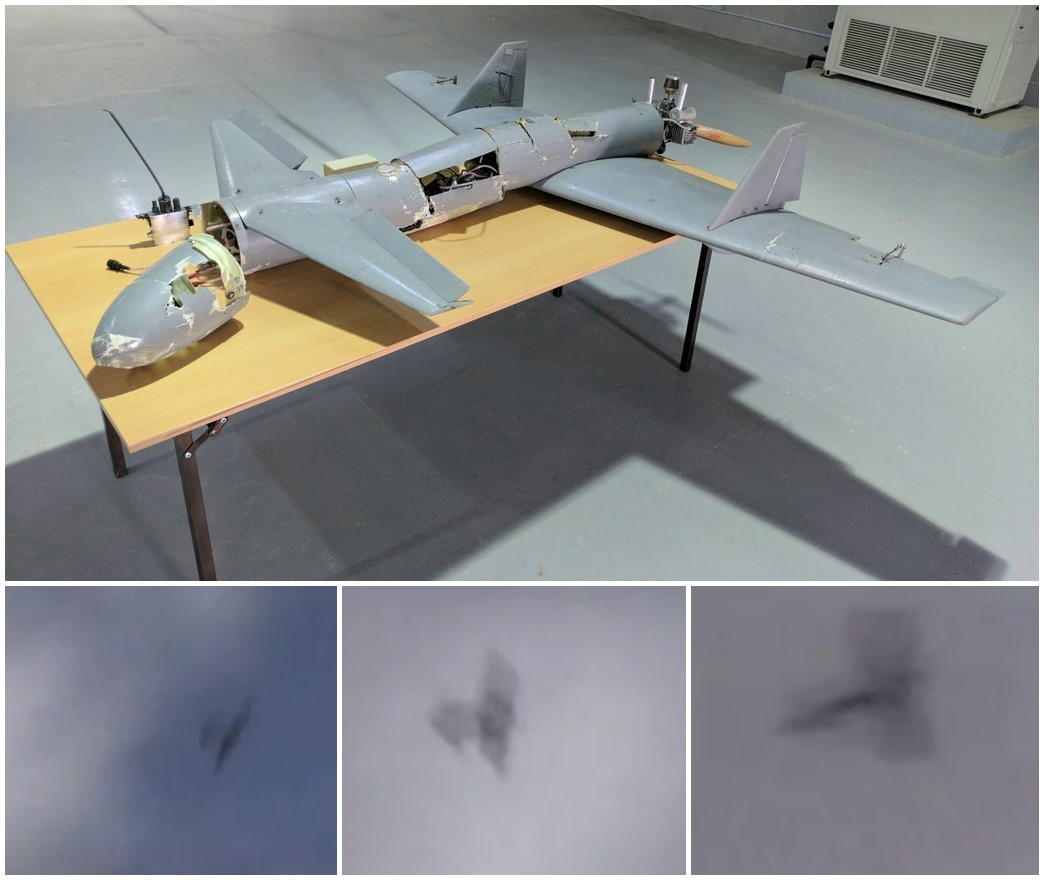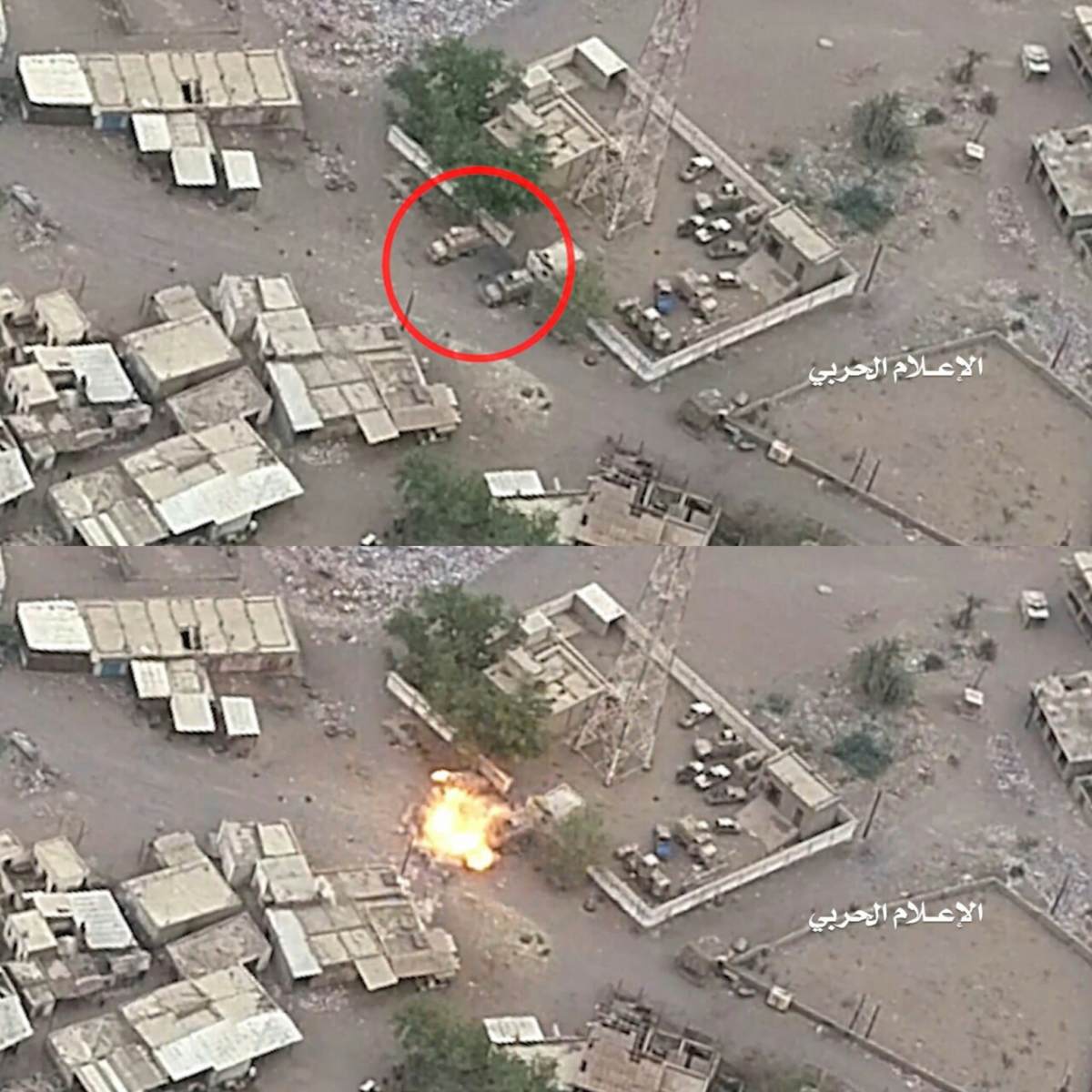A Saudi War-Crime in Yemen? Analysing the Dahyan Bombing
At just after 8:20 in the morning on the 9th of August, a bomb dropped from a Saudi-led Coalition plane struck a busy market area in the center of Dahyan, in Saada Governorate, Yemen. The bomb impacted close to the middle of the main road through the town, causing massive civilians casualties. Tragically, most of these casualties came from a single bus carrying students aged as young as 6 on a religious field trip. Local health officials put the final death toll at 54, including 44 children. The death toll is backed up by significant amounts of video evidence showing the dead bodies of young children.
The Strike:
Due to the large amount of video footage uploaded to social media in the aftermath of the airstrike, it is possible to locate the exact spot which the bomb impacted. This video posted by Mint Press News shows us the direct aftermath of the strike and the bomb crater [Warning: Extremely Graphic].
Figure 1: Geolocation of airstrike location.
The location of the strike was in a busy civilian area, less than 100m away from the main market area of the town. Additional CCTV footage published by Ansar Allah Media Center – a Houthi-aligned news network, allows us to gauge almost the exact time of the strike (08:21-24). This footage also shows the area hit included a road with busy traffic, something which would easily be visible to an aircraft circling above.
Figure 2: Distance between strike location and civilian market.
The Munition
Not long after the strike was reported by local media, activists began sharing pictures of bomb fragments which they claimed were found at the site. These fragments included many small pieces of shrapnel of indeterminate origin, however also included the front control fin of a GBU-12 Paveway II, a 500-pound laser-guided bomb, based off the Mark-82 general purpose bomb.
Figure 3: Bomb remnants allegedly retrieved from the site of the impact. (Source).
Figure 4: Close up of a control fin allegedly retrieved from the site of the impact. (Source).
Based on this image the following text is visible:
FOR USE ON MK 82
FIN, GUIDED BOMB
94271ASSY147214
The five-digit number ‘94271’ is known as a Commercial And Government Entity (CAGE) number and can be searched on an online database of items listed by the US Department of Defense’s Defense Logistics Agency (DLA).
Figure 5: Product information based on CAGE number 94271 (Source)
As can be seen the fin in this image was manufactured for a GBU-12 Paveway-II guided bomb manufactured by Lockheed Martin. The US DSCA approved the sale of 4020 of these munitions to Saudi Arabia in 2015. The crater width and depth is broadly consistent with the low end of estimates provided by the Geneva International Centre for Humanitarian Demining for the Mk. 82 bomb.
Despite this, the photos of the bomb fragments were not taken in-situ, meaning that there is the chance this fin could have been placed amongst the other wreckage by groups trying to incriminate the United States. As such, these images do not provide conclusive evidence that a Lockheed Martin-built Paveway-II bomb was used.
The Target
Following the strike, Saudi-led coalition spokesman, Col. Turki al-Malki, said coalition forces had hit a “legitimate military target”, in response to a ballistic missile fired the day before into Saudi Arabia killing one. He went on to say that “All of the elements that were in the bus were targeted”, including “operators and planners”.
This statement that the bus was a legitimate military target can be disproved through video footage filmed from inside the bus prior to the strike. It shows many children cramped aboard a small bus, with few adults and no military personnel or armed men. The size of the bus in the video is consistent with photos of its wreckage taken after it was bombed.
The Saudi-led coalition later changed their tune, promising an investigation into the incident, stating that “a bus was subject to collateral damage”.
From satellite images of Dahyan, taken as recently as last month, there is no obvious Houthi military presence in the town. Ballistic missiles, however, have regularly been fired from Saada province into Saudi Arabia, and have lead to damage and deaths in Saudi Arabia. Regardless, the fact that the bus was targeted in the middle of a busy street close to a civilian market shows a remarkable level of disregard for civilian casualties.
Under the Rome Statute, “Intentionally launching an attack in the knowledge that such attack will cause incidental loss of life or injury to civilians or damage to civilian objects” is criminalised. As such, the Dahyan bombing could be grounds for a war crimes investigation.
Bellingcat’s research for this publication was supported by PAX for Peace.



